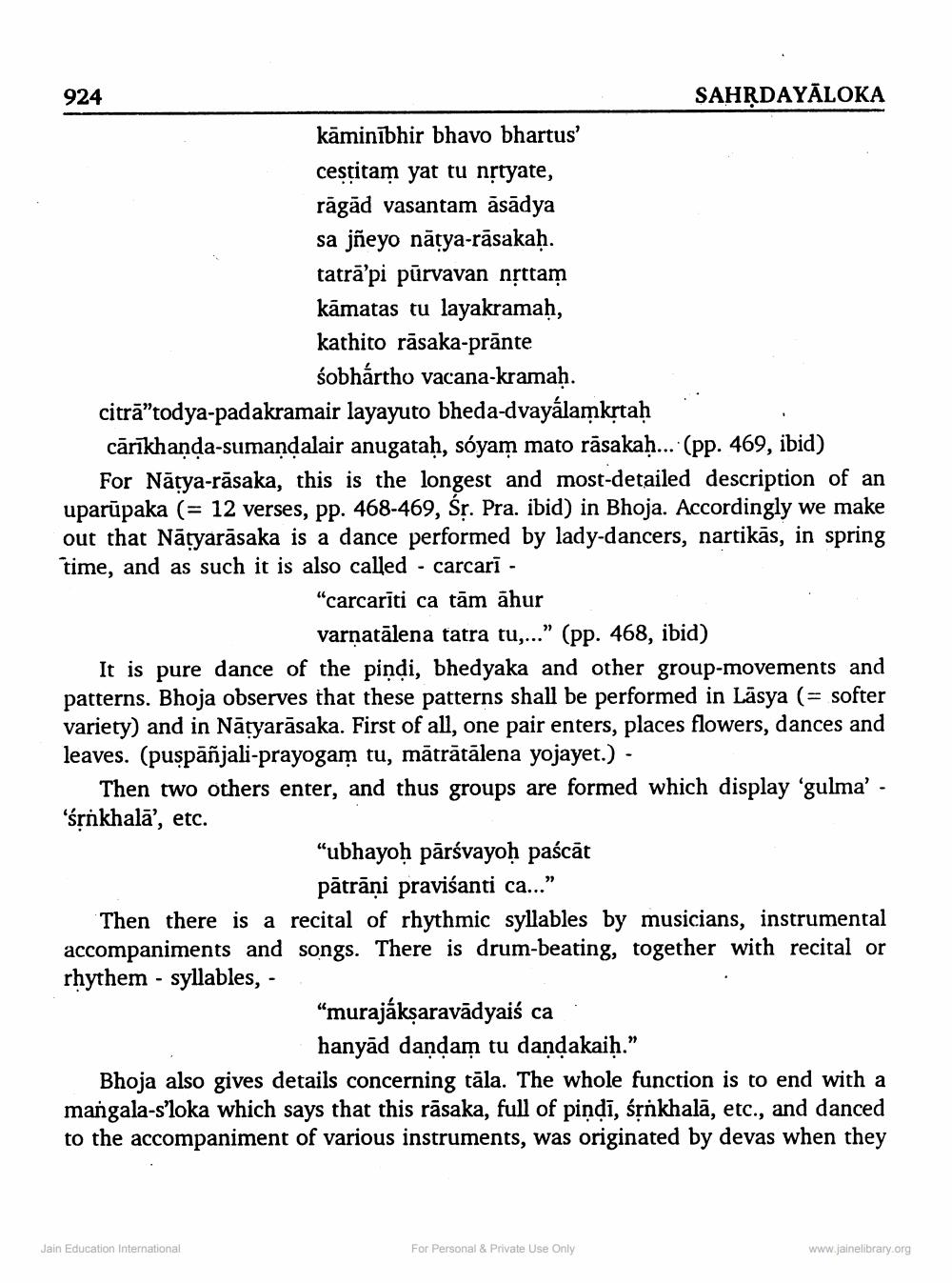________________
924
SAHRDAYĀLOKA kāminībhir bhavo bhartus' cestitam yat tu nrtyate, rāgād vasantam asadya sa jñeyo nātya-rāsakaḥ. tatrā'pi pūrvavan nịttam kāmatas tu layakramah, kathito rāsaka-prānte
śobhártho vacana-kramaḥ. citrā”todya-padakramair layayuto bheda-dvayálamkrtaḥ cārīkhanda-sumandalair anugataḥ, soyam mato rāsaka)... (pp. 469, ibid)
For Nātya-rāsaka, this is the longest and most-detailed description of an uparūpaka (= 12 verses, pp. 468-469, Sr. Pra. ibid) in Bhoja. Accordingly we make out that Nātyarāsaka is a dance performed by lady-dancers, nartikās, in spring time, and as such it is also called - carcari
"carcarīti ca tām āhur
varnatālena tatra tu..." (pp. 468, ibid) It is pure dance of the pindi, bhedyaka and other group-movements and patterns. Bhoja observes that these patterns shall be performed in Läsya (= softer variety) and in Nātyarāsaka. First of all, one pair enters, places flowers, dances and leaves. (puspāñjali-prayogam tu, mātrātālena yojayet.) -
Then two others enter, and thus groups are formed which display ‘gulma' - 'śrnkhalā', etc.
"ubhayoh pārsvayoḥ paścāt
pātrāņi praviśanti ca..." Then there is a recital of rhythmic syllables by musicians, instrumental accompaniments and songs. There is drum-beating, together with recital or rhythem - syllables, -
"murajákşaravādyais ca
hanyād dandam tu dandakaiḥ.” Bhoja also gives details concerning tāla. The whole function is to end with a mangala-s'loka which says that this rāsaka, full of pindī, śịnkhalā, etc., and danced to the accompaniment of various instruments, was originated by devas when they
Jain Education International
For Personal & Private Use Only
www.jainelibrary.org




